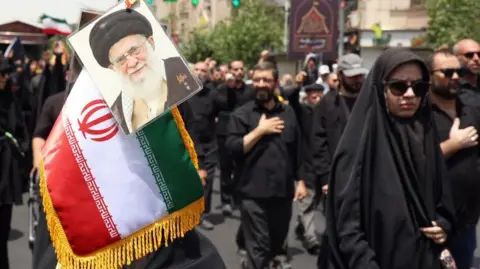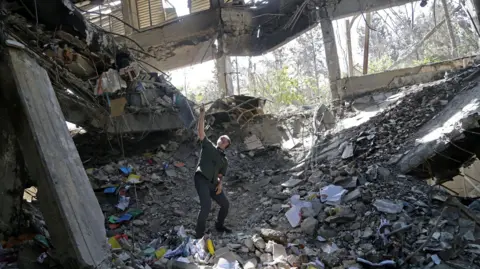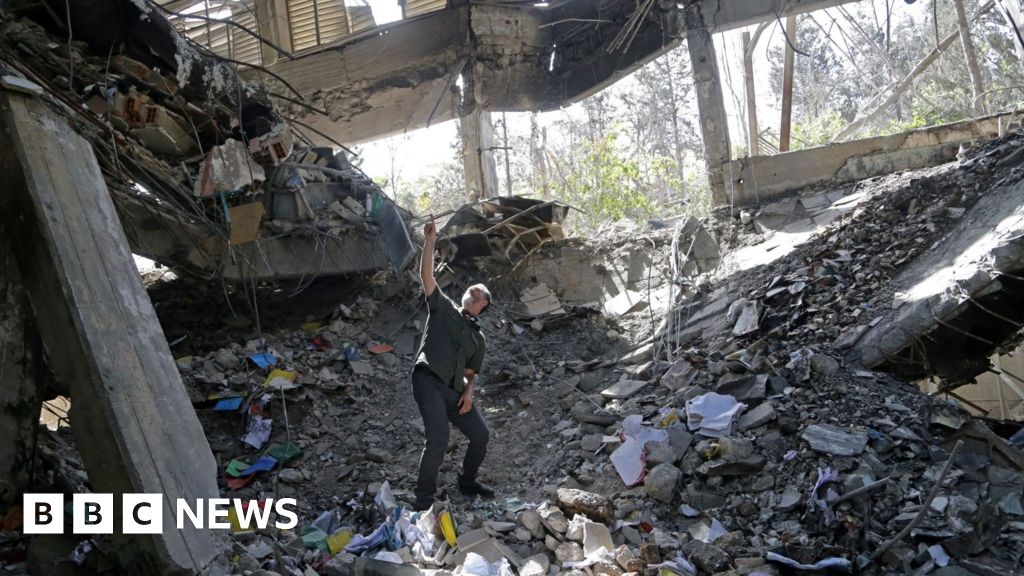On July 16, 2025, new intelligence reports released in the wake of recent U.S. airstrikes reveal substantial damage inflicted on Iran's covert nuclear enrichment facility located at Fordo. The targeted strikes, executed by U.S. B-2 bombers last month, reportedly involved the deployment of twelve high-powered munitions, resulting in either crippling or outright destruction of critical elements essential for uranium enrichment.
While assessments confirm that the Fordo facility sustained significant damage, other nuclear sites targeted by the airstrikes did not suffer as severely, though key components crucial for weapon fabrication have been reportedly rendered inoperative. U.S. officials underscore that despite the apparent destruction, a stockpile of enriched uranium still exists, potentially containing enough material to yield up to ten nuclear weapons.
However, the accessibility of this fuel is under scrutiny. Sources indicate that much of the stockpile is buried beneath debris, limiting Iran’s immediate ability to leverage it for weaponization. Analysts are speculating that operational capabilities may be significantly hampered for years due to the loss of infrastructure.
The ongoing discussion among U.S. intelligence circles centers around the broader implications of these strikes—specifically, how long the attacks may delay Iran's overall nuclear ambitions or their potential to quickly assemble a rudimentary nuclear device using existing enriched uranium.
In summary, while the strikes have effectively disrupted a vital aspect of Iran's nuclear program, concerns linger regarding the ability of Iranian facilities to recover from the setbacks, and what this means for global nuclear security moving forward. The full scope of the implications remains under close examination by both U.S. and Israeli intelligence agencies.
While assessments confirm that the Fordo facility sustained significant damage, other nuclear sites targeted by the airstrikes did not suffer as severely, though key components crucial for weapon fabrication have been reportedly rendered inoperative. U.S. officials underscore that despite the apparent destruction, a stockpile of enriched uranium still exists, potentially containing enough material to yield up to ten nuclear weapons.
However, the accessibility of this fuel is under scrutiny. Sources indicate that much of the stockpile is buried beneath debris, limiting Iran’s immediate ability to leverage it for weaponization. Analysts are speculating that operational capabilities may be significantly hampered for years due to the loss of infrastructure.
The ongoing discussion among U.S. intelligence circles centers around the broader implications of these strikes—specifically, how long the attacks may delay Iran's overall nuclear ambitions or their potential to quickly assemble a rudimentary nuclear device using existing enriched uranium.
In summary, while the strikes have effectively disrupted a vital aspect of Iran's nuclear program, concerns linger regarding the ability of Iranian facilities to recover from the setbacks, and what this means for global nuclear security moving forward. The full scope of the implications remains under close examination by both U.S. and Israeli intelligence agencies.


















